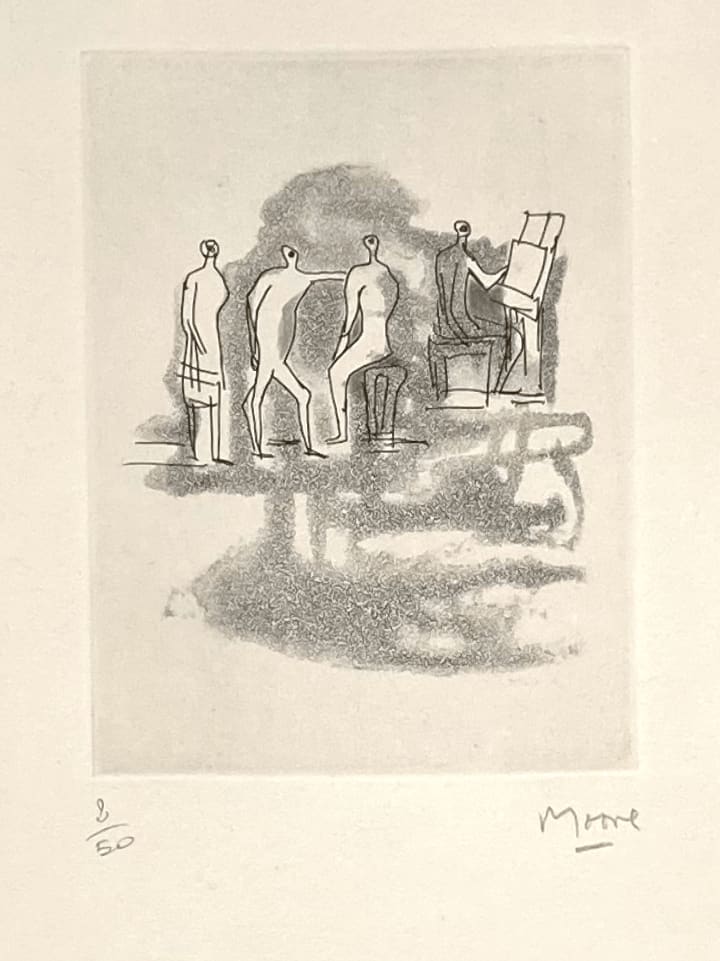Henry Moore U.K., 1898-1986
Concerto, 1967
Etching and aquatint in black on Auvergne paper
Signed by the artist, lower right on recto
Signed by the artist, lower right on recto
Image: 13 x 10 cm; Sheet 32 x 25 cm (framed: 48.6 x 40.8 cm)
© The Estate of Henry Moore
Rooted in modernist principles, Concerto embodies Henry Moore's exploration of the human form. The artist transformed figurative representation, creating semi-abstract works that blurred the boundaries between human bodies and natural...
Rooted in modernist principles, Concerto embodies Henry Moore's exploration of the human form. The artist transformed figurative representation, creating semi-abstract works that blurred the boundaries between human bodies and natural landscapes. His prints often featured biomorphic shapes, earthy tones, and organic textures that referred to human forms and natural elements like shells and bones.
Moore's artistic significance extends far beyond individual works. A pivotal figure in post-war British art, he revolutionised sculpture and graphic arts and became an international symbol of modernist creativity. His work reflected the optimistic spirit of post-war reconstruction, with public sculptures becoming emblems of social progress and cultural renewal.
By the 1960s, Moore had established himself as Britain's most renowned sculptor, creating monumental works that blended human experience and natural form. 'Concerto' represents this artistic philosophy - a delicate yet powerful exploration of shape, space, and human essence.
Moore's artistic significance extends far beyond individual works. A pivotal figure in post-war British art, he revolutionised sculpture and graphic arts and became an international symbol of modernist creativity. His work reflected the optimistic spirit of post-war reconstruction, with public sculptures becoming emblems of social progress and cultural renewal.
By the 1960s, Moore had established himself as Britain's most renowned sculptor, creating monumental works that blended human experience and natural form. 'Concerto' represents this artistic philosophy - a delicate yet powerful exploration of shape, space, and human essence.
Literature
Catalogue Number: CGM 87Join our mailing list
* denotes required fields
We will process the personal data you have supplied to communicate with you in accordance with our Privacy Policy. You can unsubscribe or change your preferences at any time by clicking the link in our emails.
